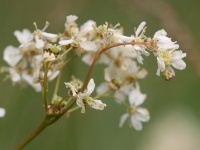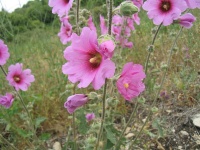An inheritance group references a group of content elements. It extends the functionality of the element group by passing on the content element configuration down the navigation tree.
Oleander
Search for content
Page subscription
Most Recent News
Exciting new Acacia variety discovered
Sep 24, 2012
An element group (like this one) allows you to group multiple content elements together and share them on several pages.
Inheritance group
An inheritance group references a group of content elements. It extends the functionality of the element group by passing on the content element configuration down the navigation tree.
Meadowsweet

Filipendula ulmaria, commonly known as Meadowsweet, is a perennial herb in the family Rosaceae, which grows in damp meadows.
It is native throughout most of Europe and western Asia though it has been successfully introduced and naturalized in North America.
Meadowsweet has also been referred to as Queen of the Meadow, Pride of the Meadow, Meadow-Wort, Meadow Queen, Lady of the Meadow, Dollof, Meadsweet and Bridewort.
The stems are 1–2 m (3-7 ft) tall, erect and furrowed, reddish to sometimes purple. The leaves are dark green on the upper side and whitish and downy underneath, much divided, interruptedly pinnate, having a few large serrate leaflets and small intermediate ones. Terminal leaflets are large, 4–8 cm long and three to five-lobed.
Meadowsweet has delicate, graceful, creamy-white flowers clustered close together in handsome irregularly-branched cymes, having a very strong, sweet smell. They flower from June to early September.
This article uses material from the Wikipedia article Meadowsweet and is licensed under the GNU Free Documentation License.
Hollyhock

The hollyhocks make up about 60 species of flowering plants in the genus Alcea (Ál-ce-a) in the mallow family Malvaceae, native to southwest and central Asia.
They are biennial or short-lived perennial plants growing to 3.5 m tall, with broad, rounded, palmately lobed leaves and numerous flowers, pink or yellow in the wild species, on the erect central stem.
Alcea species are used as food plants by the larvae of some Lepidoptera species including Bucculatrix quadrigemina and the Painted Lady (Vanessa cardui).
Hollyhocks are popular garden ornamental plants, cultivars selected, particularly from A. rosea. The flowers have been selected for variations in colour, with dark purple, red and white-flowered plants available in addition to the colours found in wild plants.
Hollyhocks are very drought resistant, and do well in full sun locations that might be too hot or dry for other plants. They produce large, flat coin-shaped seeds (1/2" diameter) that seem to grow easily wherever they drop. While an individual plant might only live a handful of years, by that time chances are good it will leave plenty of descendants. They have very long taproots which make transplanting difficult.
This article uses material from the Wikipedia article Alcea and is licensed under the GNU Free Documentation License.


